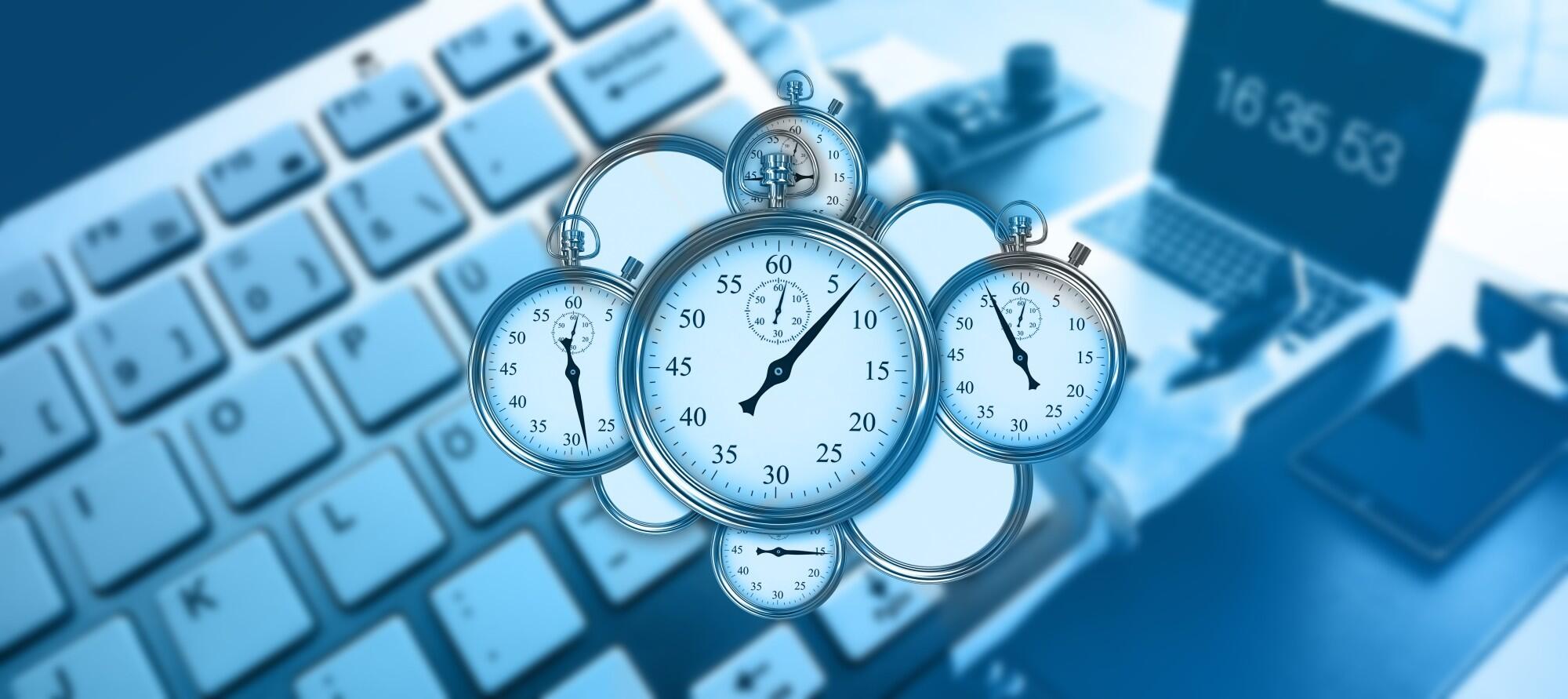Time clocks… they might not be the first thing on your mind as a business owner. And yet if you’re not using accurate time tracking systems, you’re likely wasting a lot of money.
So why are employee time clocks so important these days?
Today we’re taking a closer look at the various types, their benefits, and how to implement the right system for your business!
Benefits of Accurate Time Tracking
One of the main advantages of accurate time tracking is better labor management. With precise records of work hours, businesses can allocate tasks more efficiently. This helps ensure that all employees are working the correct amount of time and aren’t overloaded.
Another key benefit is the reduction of payroll errors. When time tracking is accurate, employees are paid correctly for the hours they work.
This reduces disputes and helps maintain a fair workplace. Accurate records also help in calculating overtime and ensuring compliance with labor laws.
Time tracking systems also boost productivity. By tracking when employees clock in and out, businesses can identify patterns and make improvements.
For example, if a particular shift consistently starts late, managers can investigate and address the issue. This leads to a more efficient workflow and better use of resources.
Employee satisfaction is another important benefit. When employees know their hours are tracked accurately, they feel more secure and valued.
This trust can improve morale and reduce turnover. Employees are more likely to stay with a company that treats them fairly.
Features to Look for in Time Tracking Systems
First, the system should be user-friendly. Employees need to clock in and out without hassle. An easy-to-use interface can save time and reduce errors.
Integration capabilities are also important. The system should work well with existing payroll and HR software.
This integration helps streamline processes and ensures accurate data transfer. Real-time tracking is another feature to look for. It allows managers to see who is working at any given moment.
Security features are crucial, especially with biometric time clocks. These systems use fingerprints or facial recognition to verify identities. Strong security measures protect employee data and prevent time theft.
Flexibility is another key factor. A good time tracking system should accommodate different work arrangements, such as remote work or flexible hours.
This adaptability ensures that all employees, regardless of their location or schedule, are accurately tracked. And look for systems that offer detailed reporting. Reports can provide insights into attendance patterns, overtime, and productivity.
Choosing the Right Employee Time Clocks
Picking the right employee time clock for your business is important for effective time tracking. The first step is to understand the specific needs of your business. Different businesses have different requirements based on their size, industry, and workforce.
A retail store with many part-time employees might need a system that handles variable schedules well. But manufacturing plant might require a rugged and reliable time clock that can withstand a harsh environment.
Consider your budget when choosing a time clock. There are options available at various price points, from basic punch card systems to advanced biometric clocks.
It’s essential to balance cost with functionality. While a higher-end system might offer more features, it’s important to ensure those features align with your needs.
Look into the ease of use and reliability of the system. Employees should find it easy to use, which helps in avoiding mistakes and saves time. A reliable system reduces the risk of downtime.
Implementing Time Tracking Solutions
Implementing a new time tracking system in your business involves several key steps. Start by clearly communicating the change to your employees.
Explain why the new system is being introduced and how it will benefit everyone. Clear communication helps reduce resistance and gets everyone on board.
Next, provide thorough training on how to use the new system. Make sure all employees understand how to clock in and out, and how to address any issues they might encounter. Offer support during the transition period to help employees adapt smoothly.
It’s also important to set up the system correctly from the start. Input all necessary data, such as employee information, schedules, and payroll details.
Make sure the system is configured to your business’s specific needs. This setup ensures the system operates smoothly and provides accurate data.
Monitor the system regularly to ensure it’s working as expected. Look for any issues or discrepancies and address them promptly. Regular monitoring helps maintain accuracy and reliability.
And gather feedback from employees. Their input can help identify any problems or areas for improvement.
Workflow and Payroll Processes
Accurate time tracking significantly enhances workflow and payroll processes. When employees clock in and out accurately, it creates a reliable record of their work hours.
This data helps in planning shifts and managing workloads more effectively. Managers can see at a glance who is working, which helps in making quick decisions and adjustments as needed.
Accurate time tracking also streamlines payroll processes. It eliminates the need for manual timekeeping, which is prone to errors.
Automated systems ensure that employees are paid correctly for the hours they work. This reduces the risk of disputes and makes payroll processing faster and more efficient. The time saved can be used for other important tasks, improving overall productivity.
Furthermore, accurate time tracking helps in managing overtime. By keeping precise records, businesses can ensure that overtime is calculated correctly and fairly.
This helps in maintaining compliance with labor laws and avoiding potential legal issues. It also ensures that employees are compensated properly for their extra work, which can improve job satisfaction and morale.
Improved workflow and payroll processes also lead to better resource management. By analyzing time tracking data, businesses can identify patterns and trends. This information can be used to optimize scheduling, allocate resources more effectively, and reduce costs.
Time Well Spent
Accurate time tracking with employee time clocks enhances workflow, reduces payroll errors, and boosts productivity.
TimeTrakGO’s web-based time clock helps businesses of all sizes save money and time. It’s an employee time clock software that’s easy to learn and simple to use. Our unique graphical employee time cards will cut your editing time in half!
Get in touch today to find out how we can help streamline your clock management!





